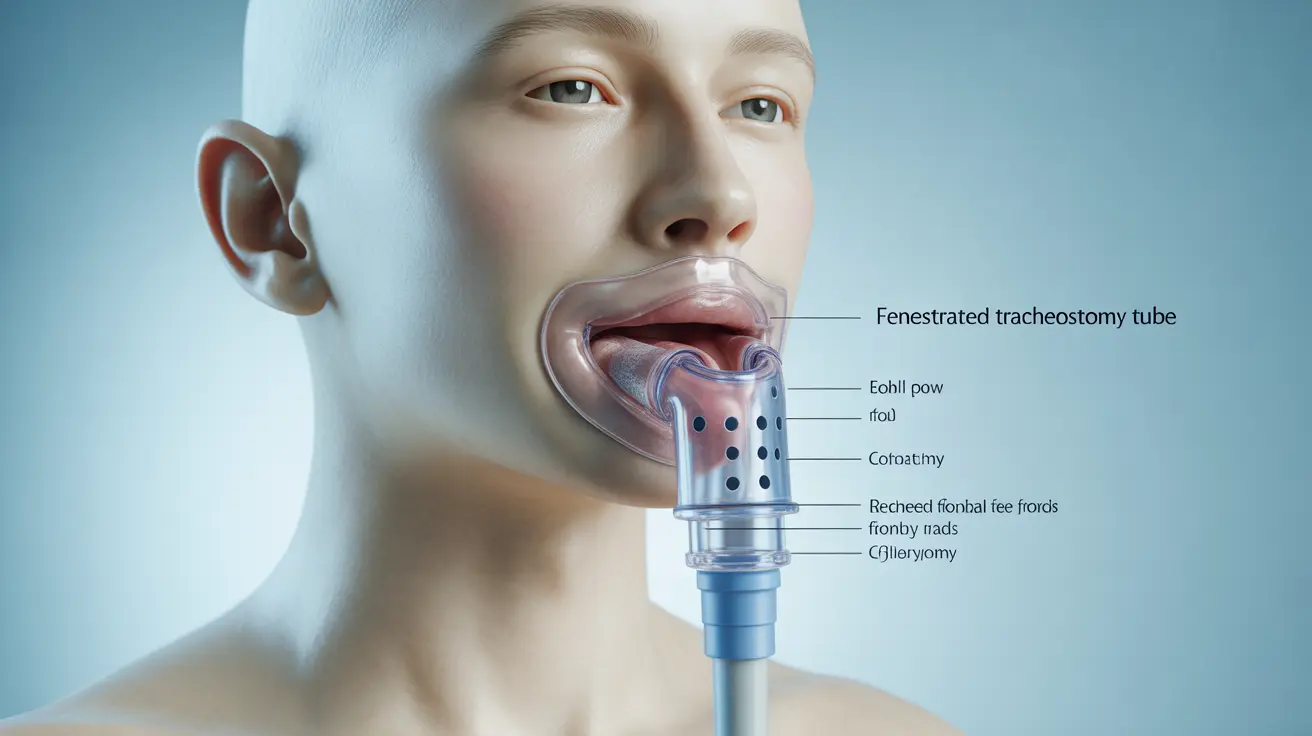A fenestrated tracheostomy tube represents an important advancement in tracheostomy care, offering unique benefits for patients who require long-term airway management. This specialized medical device features small holes or "fenestrations" that allow air to flow through the vocal cords, potentially enabling speech and providing other significant advantages for suitable patients.
Understanding the specific features, benefits, and proper care of fenestrated tracheostomy tubes is crucial for healthcare providers, patients, and caregivers alike. This comprehensive guide explores everything you need to know about these specialized breathing devices.
What Is a Fenestrated Tracheostomy Tube?
A fenestrated tracheostomy tube is a modified version of a standard tracheostomy tube that includes one or more openings in the outer cannula. These openings are strategically placed to allow air to flow upward through the larynx and vocal cords when the inner cannula is removed or when using a fenestrated inner cannula.
The design specifically enables patients to breathe through both their tracheostomy tube and their upper airway, creating opportunities for vocalization and more natural breathing patterns.
Key Benefits and Applications
Enhanced Speech Capability
The primary advantage of a fenestrated tracheostomy tube is its ability to facilitate speech. When the tube's inner cannula is removed or replaced with a fenestrated version, air can flow through the fenestrations and past the vocal cords, allowing patients to speak more naturally.
Improved Swallowing Function
The design of fenestrated tubes can help restore more normal pressure relationships in the throat, potentially making swallowing easier and more natural for many patients. This can contribute to better nutrition and reduced risk of aspiration.
Patient Selection and Medical Considerations
Not every tracheostomy patient is a suitable candidate for a fenestrated tube. Healthcare providers carefully evaluate several factors before recommending this option:
- Patient's overall medical stability
- Upper airway patency
- Swallowing ability
- Risk of aspiration
- Long-term respiratory needs
- Patient's cognitive status and ability to participate in care
Proper Care and Maintenance
Maintaining a fenestrated tracheostomy tube requires specific care procedures to ensure safety and effectiveness:
- Regular cleaning of both inner and outer cannulas
- Careful inspection of fenestrations for blockage
- Proper suctioning techniques
- Regular assessment of tissue granulation
- Monitoring for signs of infection or complications
Risk Management and Safety Considerations
While fenestrated tracheostomy tubes offer significant benefits, they also come with specific risks that require careful monitoring:
- Tissue growth through fenestrations
- Increased risk of mucus plugging
- Potential for granulation tissue formation
- Risk of aspiration in some patients
- Possibility of vocal cord irritation
Frequently Asked Questions
What are the benefits of using a fenestrated tracheostomy tube compared to a standard tube?
Fenestrated tracheostomy tubes allow air passage through the vocal cords, enabling speech capabilities, more natural breathing patterns, and improved swallowing function. They can also help patients transition more easily to eventual decannulation when appropriate.
How does a fenestrated tracheostomy tube help with speaking and swallowing?
The fenestrations (holes) in the tube allow air to flow upward through the vocal cords when the inner cannula is removed or when using a fenestrated inner cannula. This airflow enables voice production and helps maintain more normal pressure relationships in the throat, facilitating both speech and swallowing.
What are the common risks and complications associated with fenestrated tracheostomy tubes?
Common complications include tissue granulation around the fenestrations, mucus plugging, increased risk of infection, potential aspiration, and possible vocal cord irritation. Regular monitoring and proper care are essential to minimize these risks.
When is a fenestrated tracheostomy tube recommended for patient care?
Fenestrated tubes are typically recommended for medically stable patients who have patent upper airways, good swallowing function, and the potential for eventual decannulation. The patient must also be capable of understanding and participating in their care routine.
How should fenestrated tracheostomy tubes be maintained and cleaned to prevent complications?
Proper maintenance includes daily cleaning of both inner and outer cannulas, regular inspection of fenestrations for blockage, appropriate suctioning techniques, and careful monitoring for signs of infection or tissue granulation. All care procedures must be performed using sterile technique when appropriate.




